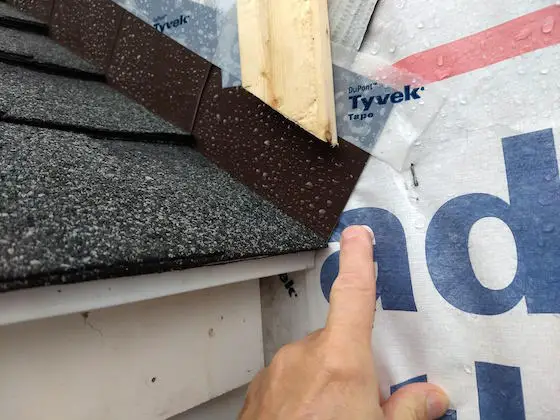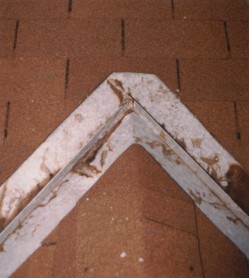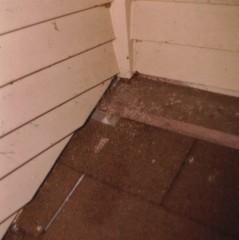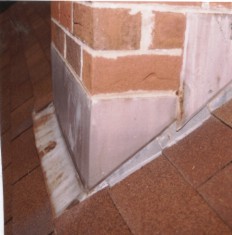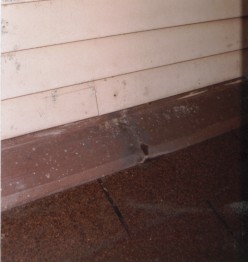Cork flooring has been available for almost 100 years. However, for some reason, it has never gained widespread popularity. Architects have been aware of its superior qualities for years. Frank Lloyd Wright used it in his "Falling Water" house. Cork flooring has been walked on for years at the Mayo Clinic. It can be seen and walked on in historic Williamsburg, the Federal Court Building, the National Archives Building, and countless libraries and churches throughout the world. Many residential homes have it as well. In fact, a close friend of mine has had cork flooring in his kitchen for 40 years.
Resilient floors are ones that have a spring or bounce to them. Cork flooring has fantastic resilient qualities. They are comfortable to walk or stand on because of this quality. Cork flooring, because 50% of the material is comprised of air, is probably the ultimate resilient flooring material. Cork derives this fantastic quality because its structure is cellular. Virtually every other wood floor product's structure consists of fibers. The reason for the difference stems from the fact that cork flooring is produced from the bark of the cork oak tree. Other wood flooring products are produced from the actual wood of different trees.
Cork flooring is probably the most environmentally friendly wood flooring product available. The cork oak tree, which is limited to the western areas of the Mediterranean, reaches maturity after 25 years of growth. At that time, during the summer months, the trees naturally dehydrate. The bark loosens from the trees and can be easily removed without damage to the tree! After nine years, the bark regenerates completely and can again be harvested.
Sound waves are naturally absorbed by cork. This is the reason it is used in many libraries, churches and museums. These qualities can be very beneficial in a residential home. You can put cork flooring in an entertainment room, family room, kitchen or any other room that normally has high levels or activity.
Cork is available in 12" x 12" tiles, planks and cork planks that have real wood veneers applied to them. Some manufacturers have 12" x 12" tiles that have a 26 mil thick clear PVC vinyl wearlayer. These tiles carry a lifetime warranty when used for residential purposes! Cork flooring can be purchased refinished in either wax or urethane as well. Or, if you choose, it can be finished on site to your specific wants and desires.
Author's Note: If you want a cork floor of your own and want to see how easy it is to install, you should consider buying my Cork Flooring eBook. It has wonderful step-by-step color photos and easy to follow directions. I guarantee your satisfaction!
Installation Ideas - Suggested Applications
Cork flooring is an excellent material for kitchens, bathrooms, hallways, family rooms, entry halls, etc. It can withstand heavy traffic. Because of it's excellent sound deadening properties, it is the flooring of choice in noisy areas. When finished with urethane, or purchased with a factory applied vinyl wearlayer, it will not be easily damaged by ordinary spills in kitchens and bathrooms.
Note: As with any wood flooring products, allowing any liquid to remain on the surface for extended periods of time can damage the flooring. Cork flooring can be damaged by excessive use of water or pooling of water on the floor. Simply use common sense and you will be okay.
Cork Flooring Installation, Care and Maintenance
Cork flooring can generally be installed in any area you would normally install hardwood flooring. However, virtually every manufacturer cautions against installing cork in below grade applications (basements). Often, these areas can be subject to flooding from stopped up sewers or heavy rains. Also, older houses may have untreated basement slabs and foundation walls that allow massive quantities of water vapor into the basement. This water vapor can cause the cork to swell.
Cork flooring is applied with adhesives. If you decide to purchase a refinished cork flooring material, it is absolutely critical that the subflooring is perfectly smooth. If the subfloor is not smooth, you may experience slight raised edges where the tiles abut one another. Once again, exercise common sense. As in anything, the finished product is only as good as the foundation upon which it rests. Your subflooring is the foundation for your cork flooring.
Prior to installation, it is a good idea to allow the cork flooring to get used to its surroundings. Trades people refer to this as acclimatizing. Unpack the cork from its boxes, and remove any plastic wrap. This allows the cork to expand or contract in response to the temperature and humidity levels in the house. Never install cork on a freshly poured concrete slab! Moisture in the slab cannot exceed 2%. The manufacturers will tell you how to test for this. If your house has been newly plastered, drywalled or painted, you should also wait until the indoor relative humidity drops below 65%. Humidity levels of 40 - 55 percent are ideal.
As it is being installed, and after the installation is complete, cork must be rolled with heavy (100 lb.) rollers. These rollers help insure a good bond with the adhesive and help to make the edges smooth. Use of rollers is a must!!!!
After installation, do not wash the floor for at least 5 days. Never flood the flooring with mop water. As with any polished flooring material, do not allow dust, dirt or grit to accumulate. These will scratch the finish. Vacuum or dust mop daily to remove dust and dirt. When you decide to clean the floor, use very mild detergents and a damp mop only.
Depending upon the type of finish you have chosen, each manufacturer has recommendations which you should follow. Vinyl finishes, urethanes and waxes all require different recoating procedures. The manufacturers will provide you with specific instructions.
Regardless of which finish you choose, I'm confident that you will enjoy your cork floor! Contact me if you do have a success story to share with others.
Cork Flooring Manufacturers
- Environmental Flooring Products, Inc.
PO Box 125
2211 Lithonia Industrial Blvd.
Lithonia, GA 30058
800-533-CORK (2675) - Expanko Cork Co. Inc.
1129 W. Lincoln Highway
Coatesville, PA 19320
800-345-6202 - Dodge - Regupol Inc.
PO Box 989
715 Fountain Ave.
Lancaster, PA 17608-0989
717-295-3400 - WE Cork Inc.
16 Kingston Road, Unit #6
Exeter, NH 03833
800-666-CORK (2675)
I recommend that you call these manufacturers and ask for their product literature. They will be happy to send it to you. Some of the literature includes small samples of the cork flooring. Be sure to request names of local distributors in your area. Often the literature contains excellent photographs, installation guidelines, pricing and care instructions.
Column B44
